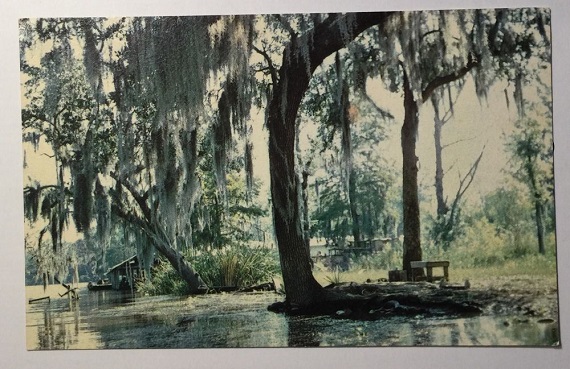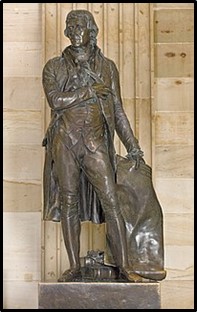If these were normal times, we’d all be unpacking our Mardi Gras gear right about now. Purple, yellow, and green would be everywhere, and I would be writing about how the first (and oldest) Mardi Gras in North America was in Mobile, Alabama, and not New Orleans. But things went a little haywire recently, and Mardi Gras got canceled. However, just because we can’t have Mardi Gras doesn’t mean we can’t continue to enjoy some good old tail-waggin’ Cajun music, ahhh-eeeeee!!!!
So, what is Cajun music? Cajun music comes from southern Louisiana, and is a juicy gumbo of French folk music, Caribbean music, Scots-Irish Appalachian music, Indian music, Jewish-German music, and the Blues. Typically, Cajun music will mostly feature guitar, accordion, and triangle, yet will also have some various other folk instruments thrown in for flavor.
The whole story goes all the way back to 18th century Canada when the Acadian people of eastern Canada were expelled by the British after the French and Indian War. As far as the British were concerned, the Acadians had two major strikes against them. First, they were French, and second, they were Catholic. Both of these characteristics made them terribly untrustworthy, so the British (and New Englanders) kicked them out. A conservative estimate of over 11,000 Acadians were forcibly expelled from their homeland, and many of them migrated all the way around to Louisiana, which was still under Spanish rule at the time. The migrant Acadians specifically sought to settle in another area that was both Catholic and allied with the French, so the isolation of southern Louisiana was perfect for them.
Although the Acadians watched as Louisiana changed hands from Spain to France, and then from France to the United States, their new American landlords seemed willing to leave them well-enough alone, and they were able to continue their lives and traditions untouched for many more decades. French Acadians were always proud of both their isolation and their impoverishment, and they didn’t really consider themselves to be part of the newly-formed Confederacy either when it appeared in 1861. Furthermore, the Confederate government seemed willing to continue the policy of non-interference with isolated, independent Acadian communities. However, that all began to change in 1862 when the Union recaptured New Orleans, and started a policy of forcibly assimilating French Acadians into American culture that continued through Reconstruction. After all, every evil Southerner was the same, Confederate or not, right? Reconstruction imposed impossible living conditions on Southerners, leaving them broke, destitute, and fighting just to survive. In Louisiana, this brought all ethnic groups down to the already-impoverished level of the Acadians, and they began to mix and intermarry with surrounding communities and ethnicities. This is where the people we know today as “Cajuns” come from. Although the Cajuns definitely descended from the isolated 18th century French Acadian migrants, they didn’t exist as a population until 100 years later during Reconstruction. It was during this same time that as the blood mingled, so did the music. Cajun music picked up the fiddle, accordion, and triangle from the Scots-Irish, the Germans, and the African-Americans, and Cajun music was born along with the Cajun people.
Cajuns continued seeking isolation beyond Reconstruction, and largely remained successful at maintaining their cultural identity right up until World War II, at which point the general American culture once again invaded and diluted Cajun culture with “Americanization” (Cajun soldiers were highly valued for the fluency in French). They lost a lot of French tradition and culture after the war as schools in Louisiana sought actively to eliminate the French language as a sign of “progress.” Most Cajuns became bi-lingual, speaking English at school and French at home, and generations of Cajuns were born that, for the first time, did not speak French at all.
But what about the music? Most Cajun music can be divided into one of two main categories – Ballads or Dance music.
Cajun ballads reflect lament from the historic upheaval of the French Acadians by the British, and they often feature a mournful quality. Unfortunately, there are no known surviving ballads of the expelled French Acadians, and any Cajun ballad known today is a hybrid. It would be awesome if someone could uncover some long-lost original Acadian ballad, but so far, it hasn’t happened. The most common instrumentation for a Cajun ballad was a vocalist and a guitar – and even the guitar was optional. Most Cajun ballads featured the popular recurring themes of lost love, betrayal, and death.
I have written before of the immense contributions made to Southern culture and music by early 20th century ethnomusicologists who literally wandered the countryside and recorded what they heard. Alan Lomax was just such a hero who recorded amateur renditions of Cajun ballads in southern Louisiana, allowing them to be captured and preserved indefinitely. The significance of those early recordings is that they represent an accurate snapshot of authentic Cajun culture right before the assimilation and “Americanization” of World War II. Those priceless recordings represent the last precious days of a purely Cajun culture, and became a treasured goldmine for contemporary Cajuns musicians seeking a reconnection with their past.
This is one of Lomax’s recordings of a Cajun ballad called “Tout Un Beau Soir En Me Promenant,” as performed a capella by little Elita Hoffpauir in the 1930’s. According to the liner notes, this song “tells the tale of a young shepherdess walking alone at night in search of her sheep in the forest.” Since I don’t speak French, I’ll have to take their word for it.
One of those contemporary Cajun bands that successfully reconnected with their past culture is called BeauSoleil, and this ballad performed by their fiddler, Michael Doucet, is called “Je M’ai Fait une Maîtresse,” which basically means “I made myself a mistress.” It’s a little difficult to sing and play the fiddle at the same time, but he pulls it off by swapping out back and forth.
The third ballad I want to present is performed by Ann Savoy, who is legendary in her recreations of authentic Cajun ballads, and is a founding member of the contemporary Cajun band The Magnolia Sisters. In this piece called “Aux Illinois,” you get to hear her haunting vocals accompanied by her deeply moving drone-style guitar.
The second type of Cajun music is the more popular and familiar style of Dance music, which is built around the concept known as fais do-do. An exact translation of “fais do-do” is not as functional as a general meaning, which is basically, “children, go to sleep, because the grown-ups have some grown-up things to do.” Therefore, Cajun Dance music would be played at a fais do-do, and pretty much any excuse for a Cajun to start dancing is going to be called a fais do-do. It doesn’t take much. A fais do-do can be formal or informal, and it can be planned or totally impromptu. The full power of Cajun instrumentation can be found in the Dance music which includes influence from the Scots-Irish (fiddle), Indians (terraced drone harmonies), African Americans (syncopation and percussion), and Jewish-German immigrants (accordion).
In my own personal collection of Cajun dance music, there is a tie between an older, traditional group and a more contemporary, modern group. Both groups are faithful to the authenticity of the music, and I want to make sure you get an equal experience.
The first group is the Balfa Brothers, consisting of real-life brothers Rodney, Dewey, Will, Harry, and Burkeman. They learned music from their father, who was a Louisiana sharecropper, and they started playing together in the 1940’s. Therefore, their style is considered to be the last, best surviving example of authentic Cajun music before the corruption following World War II. As far as progressive America was concerned, their professional timing was terrible as they first began to perform and record when authentic Cajun had become “not cool.” However, the Balfa Brothers persisted with their old, traditional sound, and stayed true to their roots as they basically waited on the rest of the world to gravitate back to them. Eventually, a Cajun cultural renaissance took place in the late 1960’s, and the Balfa Brothers suddenly became a hot commodity. They were really just starting to take off internationally in the 1970’s when Rodney and Will were killed in a car crash in 1979 near Bunkie, Louisiana.
This is my all-time favorite song by the Balfa Brothers called “Le Danse de Mardi Gras,” featuring Rodney on vocals.
I had a chance to see the Balfa Brothers in the Spring of 1978, and I missed it. They were performing at a Cajun Festival near New Orleans, and my high school jazz band was there at the same time performing in a separate jazz festival. I had never heard of the Balfa Brothers, but the photo in the newspaper caught my attention – it’s the photo seen at the top of this post. I was intrigued and conflicted, because something was pulling at my love of music to go and see this group at all costs, but eventually my jazz snobbery prevailed. They were Cajun, after all, and NOT jazz. I would never get another chance.
Boys and girls, let this be a life lesson – friends don’t let friends become jazz snobs.
Cajun Dance music is also recognizable for its famous shuffle beat. Little children learning how to play Cajun music are taught to play fiddlesticks, which is a technique of tapping on a fiddle with a Cajun shuffle beat in order to feel and learn it. This is a short clip of Dewey Balfa and his nephew giving a demonstration.
My other favorite Cajun Dance group is the Magnolia Sisters, founded by Ann Savoy. Ann Savoy is an amazing Cajun musician/historian, who is equally fluent in traditional Cajun music as well as modern, contemporary blends. She and her husband Marc also perform professionally on occasion with Michael Doucet of BeauSoleil (featured above in the Ballad section), and she also has a jazz group as well. Ann Savoy tends to tailor-make each of her performing ensemble specific to a particular style, and it is as the Magnolia Sisters that her Dance style really kicks up the best. Here they are performing “Mag Hop,” where the triangle is replaced by the washboard. The washboard is essential to this performance, because it is able to provide those great shuffle rhythms to the beat, which gives this classic Dance song a train-style feel.
Since I’ve mentioned BeauSoleil a couple of times already, it would be a travesty not to play them at this point. So, here is the contemporary Cajun band BeauSoleil and their rendition of a Dance classic called “Parlez-Nous a Boire.” Specifically, listen for that shuffle beat on the full drumset, and those classic drone vocal harmonies.
In this presentation, I have purposefully avoided sub-genres of Cajun music, such as Zydeco and Swamp Rock. Trust me, they will not be forgotten, and they will be powerful subjects for a later day. And I should also take a moment to thank a colleague of mine, Kathryn Harpainter, for helping to fill in all my knowledge gaps on Cajun history.
Some contemporary art composers have started utilizing the components of Cajun music in their own original compositions. As Cajun bands have become popular in tours of Europe and Asia, Cajun Festivals have started popping up all over southern Great Britain. A kind of “parallel” Cajun culture has appeared in London, Wales, and Cornwall, where they have their own bands, record labels, and fan publications. The greatest irony, of course, is that it was the British who got this whole thing started by expelling the Acadians in the first place 250 years ago.








One Comment